From the ![]() Pizza Issue
Pizza Issue
After a trip to Naples, Italy, I will never again utilize a pizza emoji without overthinking it. As ridiculous as that sounds, I am not alone; in fact, when it comes to deeply contemplating all things pizza, I would say I am in very good company. I would also say no community of people has given more thought to pizza than the inhabitants of Naples.
And yet, I would bet good money there were no Neapolitans behind the design of the pizza emoji. The international digital representation of pizza—topped with pepperoni—is clearly based on American iconography. But this is not a polemic against the pizza emoji, rather a means of pointing out there is no single way to perfectly represent pizza.
Pizza varies not only from one country to another, but even between neighboring cities. This hyper-regionality is evident in both the U.S. and Italy. However, while the difference between a New York slice and a Chicago slice is common knowledge amongst most Americans, there is only one kind of pizza in the world that has been formally defined: the Neapolitan pizza.
Both the pizza itself and the Neapolitan pizza-maker (called a pizzaiuolo in the local parlance) have been identified and carefully codified by multiple multinational organizations, including the European Commission and the United Nations Educational, Scientific and Cultural Organization (UNESCO). These important recognitions and their corresponding regulations are the result of decades of work on behalf of one organization in particular: the Associazione Verace Pizza Napoletana (True Neapolitan Pizza Association).

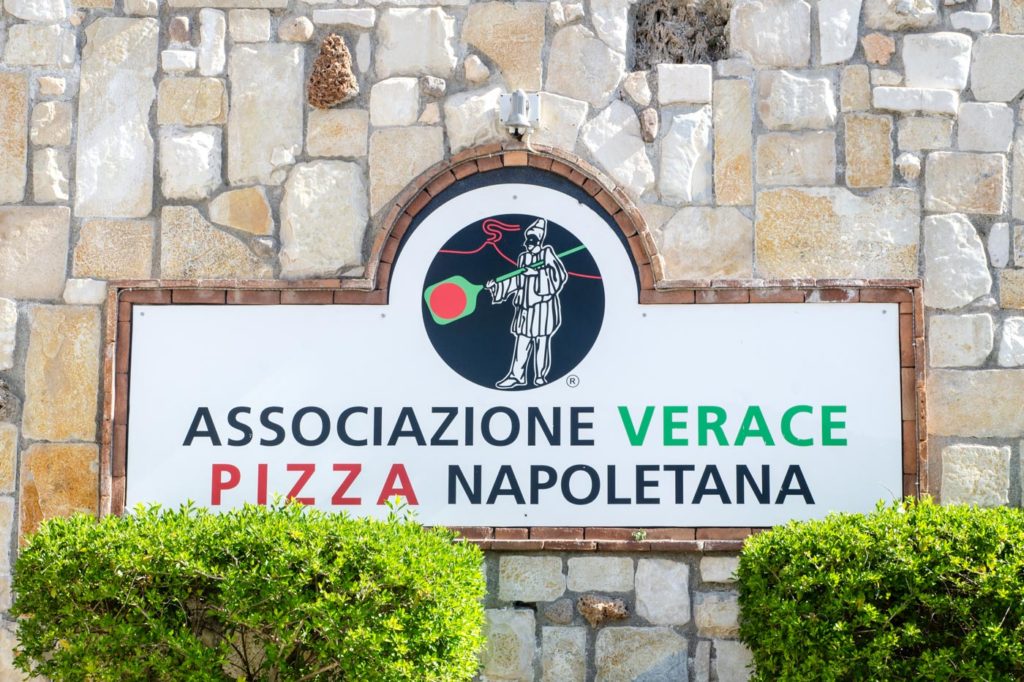

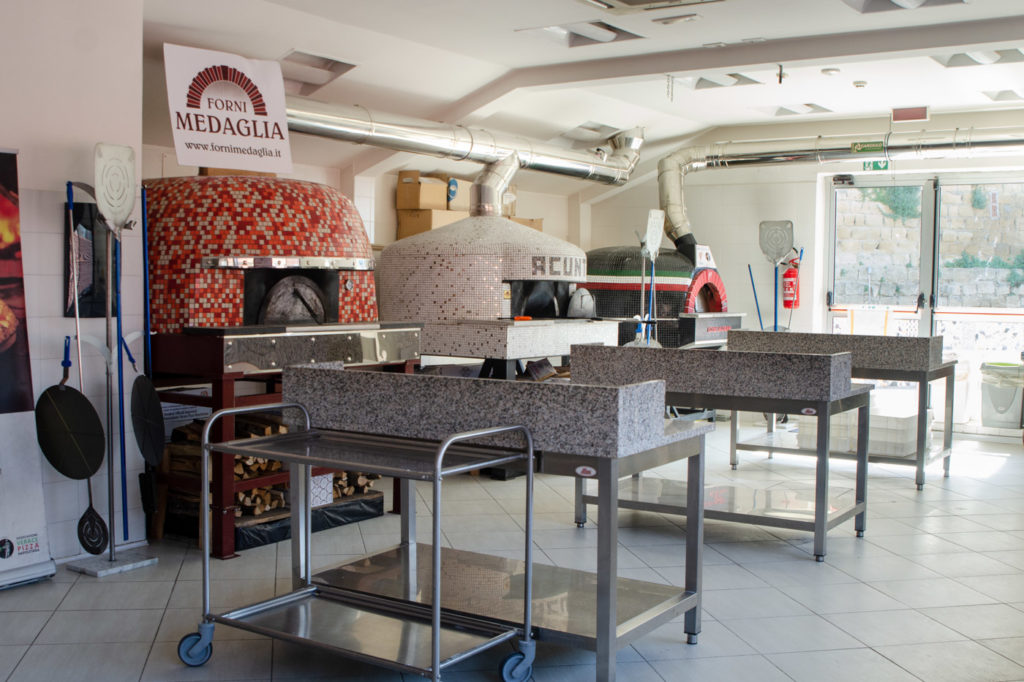
The Associazione Verace Pizza Napoletana (AVPN) was founded in 1984 in an act of pure, profound passion for the pizza of Naples, propelled forward by a native Neapolitan, Antonio Pace, who continues to serve as president of the association. I met with Pace at the AVPN headquarters located in the Capodimonte (top-of-the-mountain) neighborhood of Naples on a steep hill overlooking the entire city and beyond to the glimmering blue Gulf of Naples. Though outside the historic city center, the headquarters (comprised of offices, a cooking school, accommodations for pizzaiuolo students, and a soon-to-open restaurant) serve as the center of the universe for Neapolitan pizza and the point of departure for its diffusion across the globe.
Pace adamantly believes the preservation of Neapolitan pizza relies not only on perpetuating the tradition of pizza-making within Naples, but also encouraging others to take it up around the world. Today, the AVPN has expanded into forty-five countries with close to eight hundred restaurants serving Neapolitan pizza according to their standards. But when Pace founded the AVPN thirty-five years ago, his first priority was to define what it is that characterizes an authentic pizza napoletana.
Defining authenticity (especially when it comes to food) is a challenge fraught with the risk of reductionism. By necessity, the process is contrary to creativity and to the existence of multiple interpretations of any given thing. While the definition of Neapolitan pizza established by the AVPN does not leave much wiggle room for creative interpretation, it is the outcome of a collaboration that valued the varied perspectives of its numerous participants. When Pace decided to found the AVPN, he worked together with his mother to devise a list of the families that had historically carried on the tradition of pizza-making in Naples. Pace claims he has pizza in his DNA, coming from generations of pizzaiuoli both on the maternal and paternal sides of his family. He then organized a meeting with the pizzaiuoli of seventeen families, and together they created a document defining Neapolitan pizza based on an amalgamation of their family traditions. Pace took this document to be registered by a notary in 1984, making it the first official document providing a definition for pizza napoletana.
This document has since transformed into a ten-page treatise detailing every part of the pizza-making process from the individual ingredients to the final product. It is important to note there are technically two types of pizza napoletana: the iconic margherita pizza and the lesser-known marinara pizza. The first, topped with a simple tomato sauce, oil (preferably olive oil), mozzarella (or a similar Italian cheese fior di latte) and basil, was named for Queen Margherita, who reigned in Italy in the late nineteenth century. The second, topped with tomato sauce, oil, oregano and garlic, was named for the mariners who docked their boats in the Port of Naples and enjoyed the pizzas, which were historically sold along the waterfront by pizza-peddlers on bikes. Both the margherita and the marinara pizzas are also certified as “Pizza Napoletana TSG” (Traditional Specialty Guaranteed) through the Geographical Indications system of food labeling regulated by the European Union.
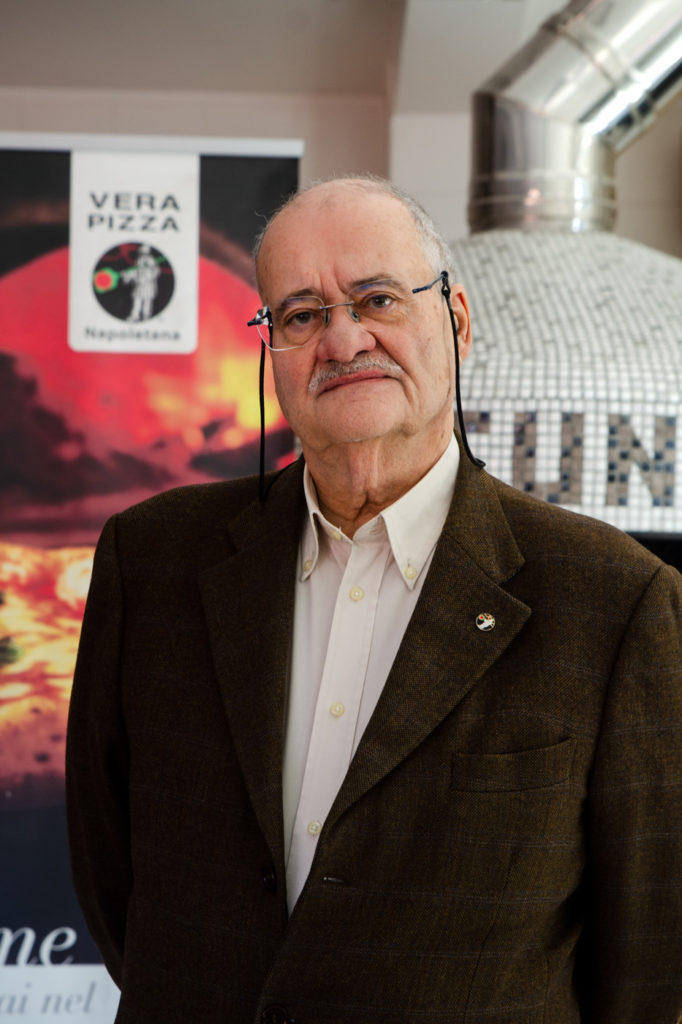
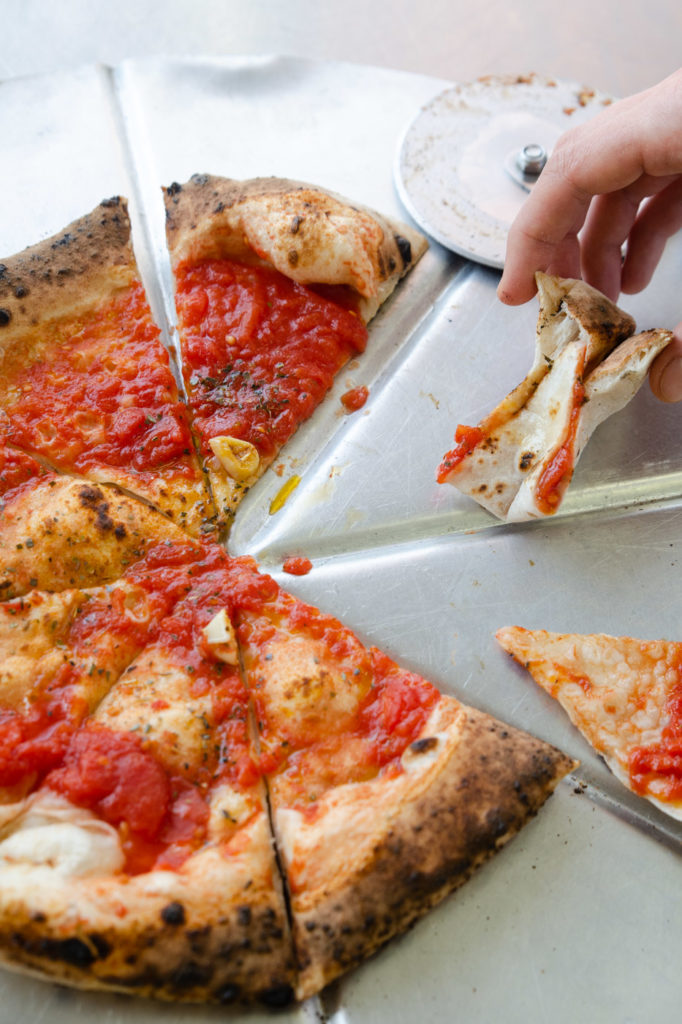
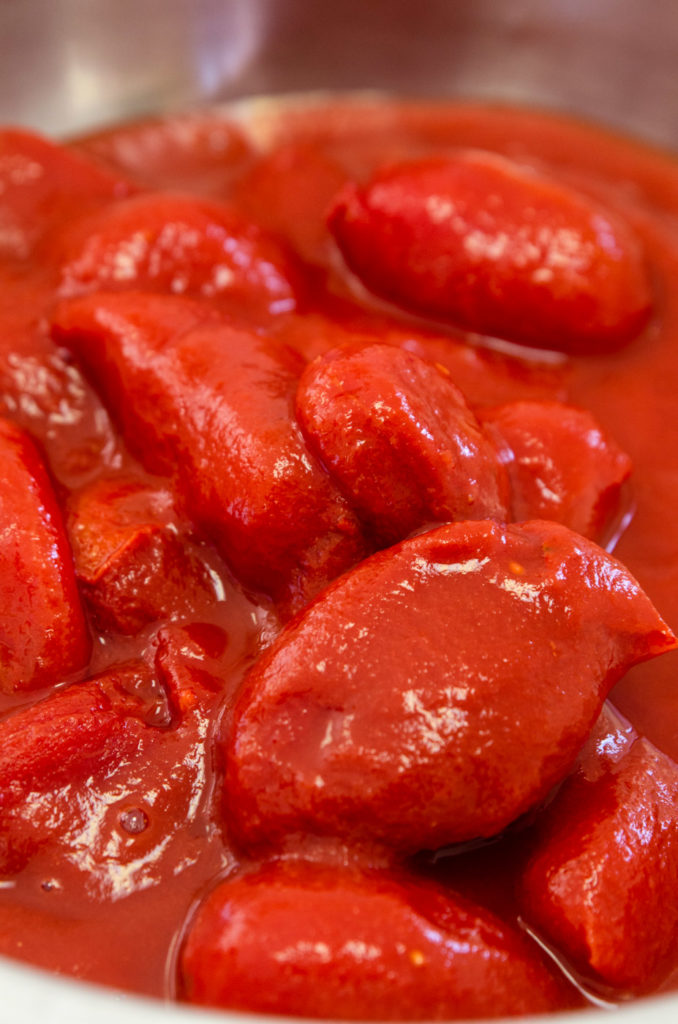
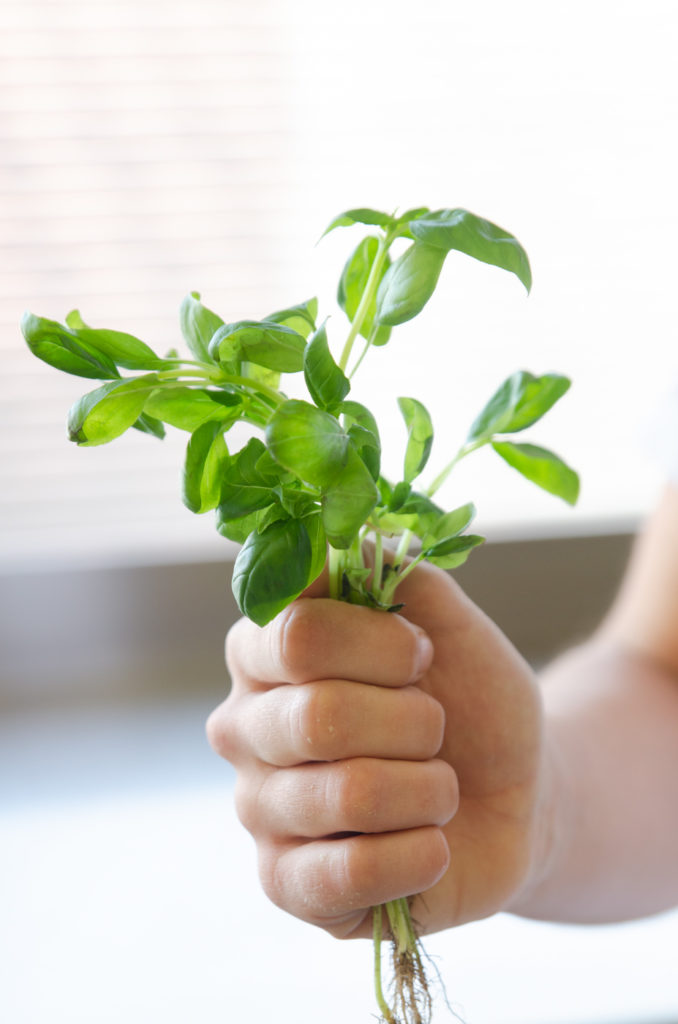
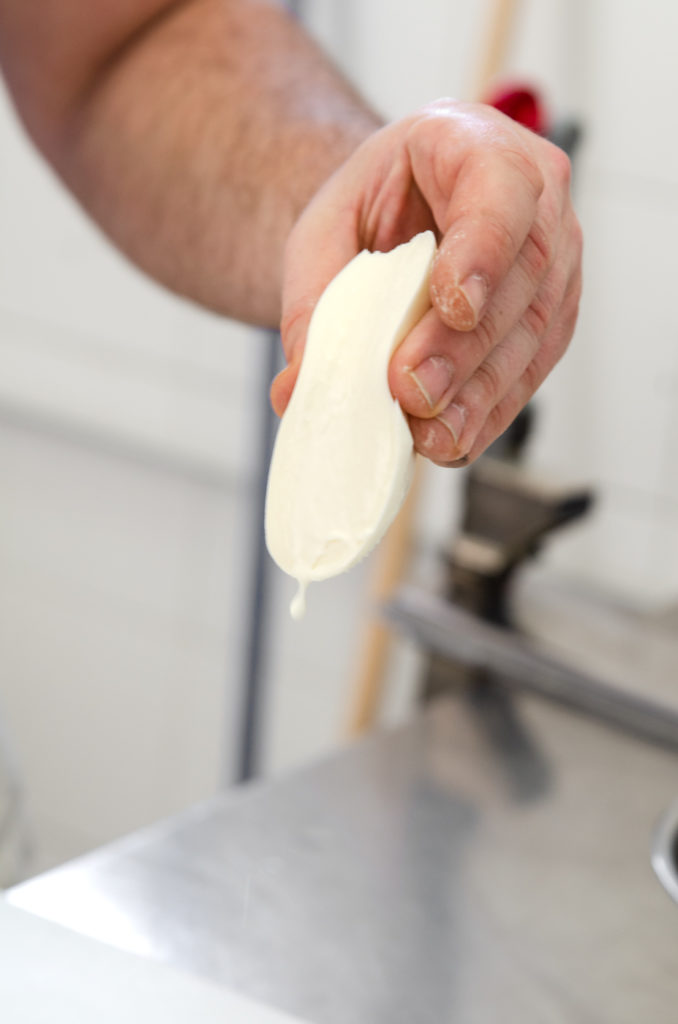
For each pizza, the crust must be made from just four ingredients: flour, water, salt and yeast, each of which comes with its own set of guidelines. Contrary to the Italian tradition of cooking a occhio (eyeballing or guessing at a glance), the measurements are precise. With references to specific pH levels, fermentation periods, cooking times, and oven temperatures (which vary depending on where the pizza is placed in the customary dome-shaped, wood-burning oven), reading through the document is an eye-opening lesson in food science. During my time at the AVPN headquarters, I was fortunate enough to receive hands-on instruction from a certified pizzaiuolo, who patiently walked me through each step of the process with a thorough explanation of not just how, but why.
To Pace, the why is especially important because, in the past, pizza-making knowledge was passed directly from father to son, and the only justification given for any aspect of the process was “because it has always been done this way,” making it difficult to share or improve on a family recipe. Pace tells me he hopes to grow the number of Neapolitan pizzaiuoli in the world, which he feels has nothing to do with where the pizza-maker was born and everything to do with his or her commitment to the craft.
With this in mind, Pace came to the conclusion that having a standardized recipe based on the numbers of a metric scale and clock would be the only way to increase the production of Neapolitan pizza while also guaranteeing its quality when produced outside of family pizzerias and the city’s borders.
Accordingly, the official document defining the Neapolitan pizza describes every aspect with meticulous exactitude. The diameter of the pizza, for example, must not exceed thirty-five centimeters. The crust along the edge must have a height of one to two centimeters and the interior base crust must be just 0.4 centimeters thick. However, a more rustic execution of the process remains alive through the day-to-day work of the pizzaiuoli.
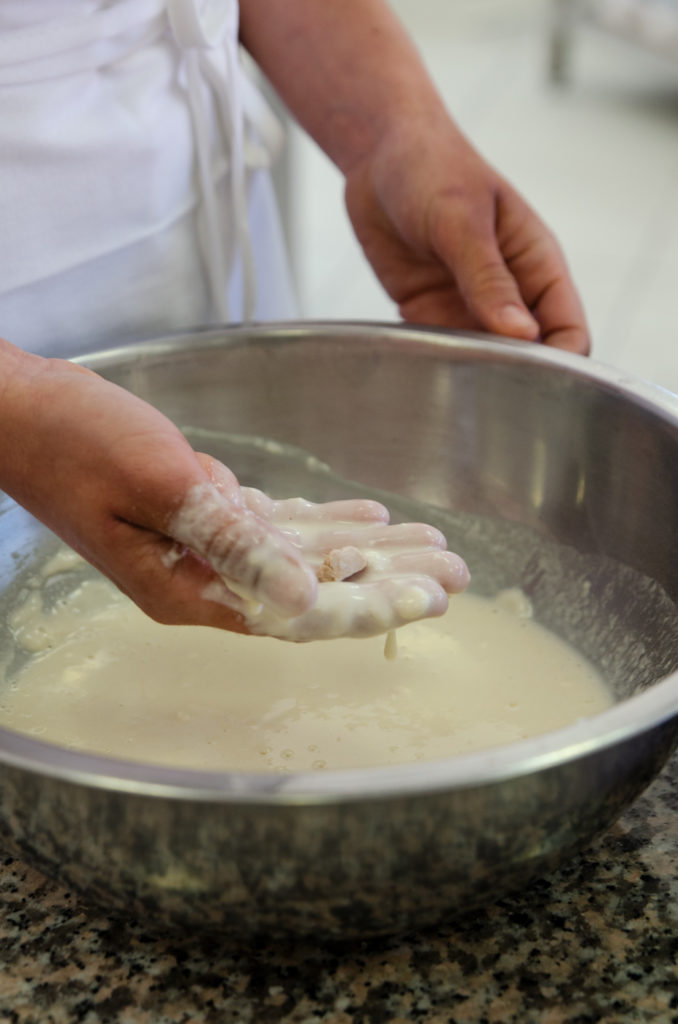
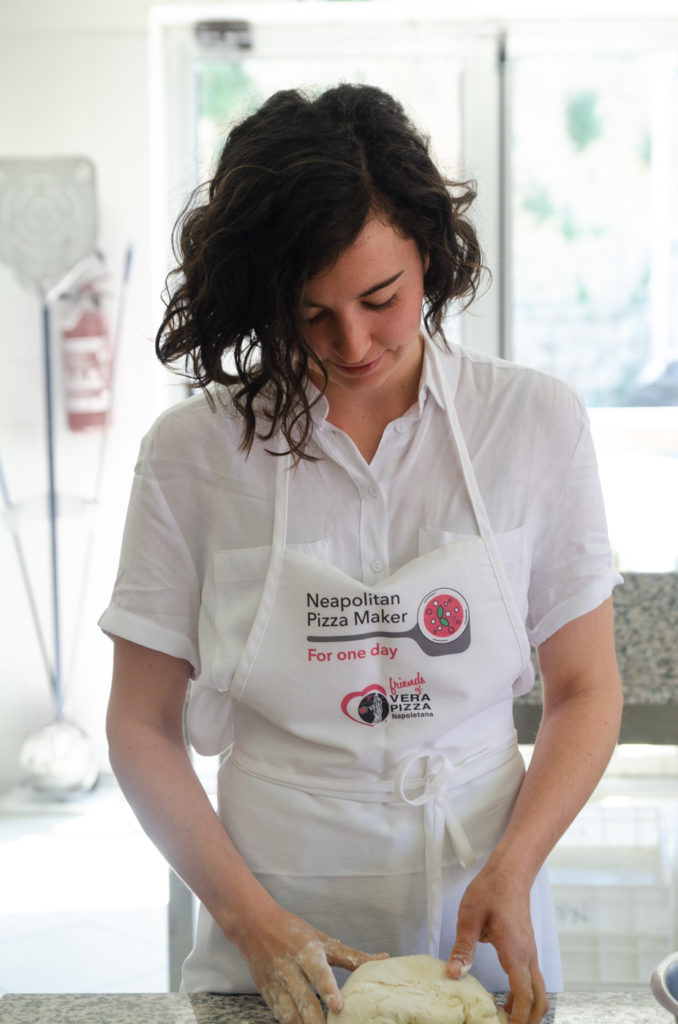
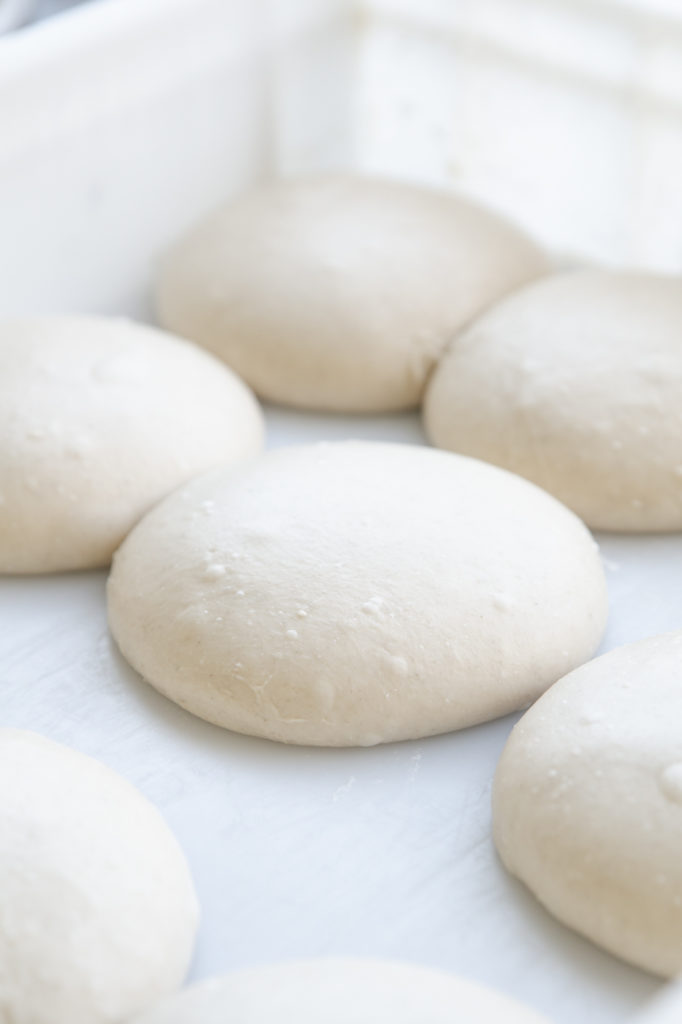
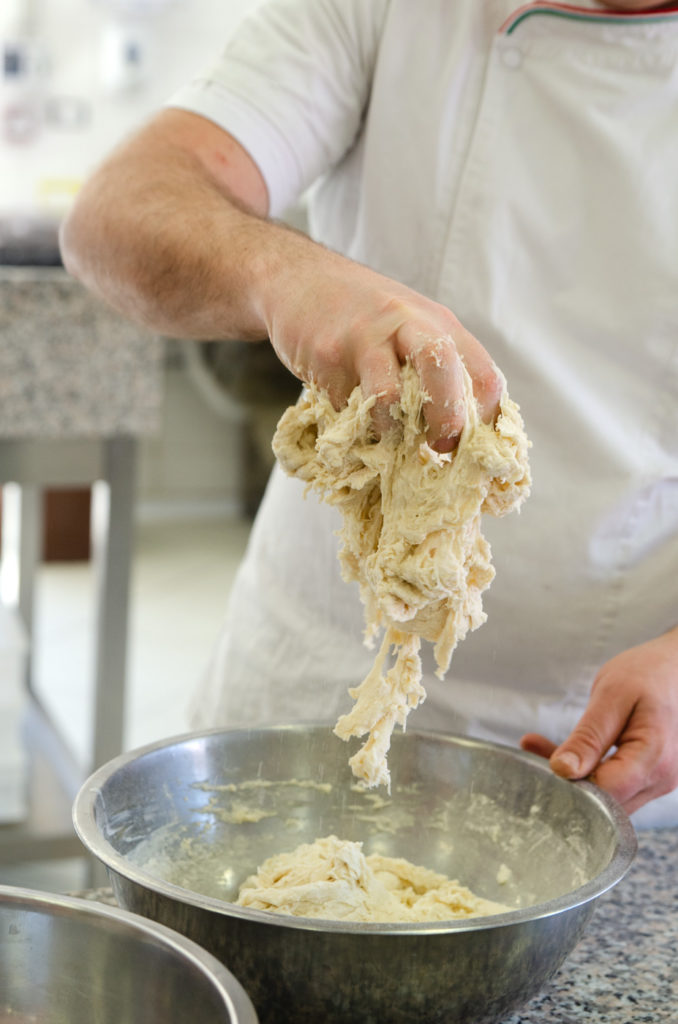
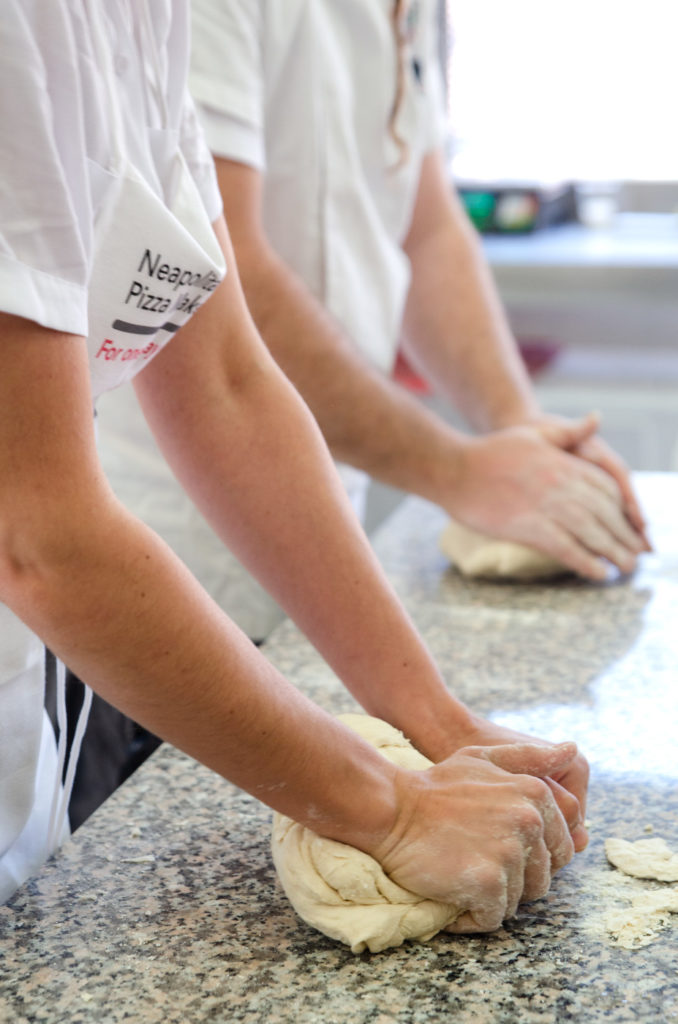
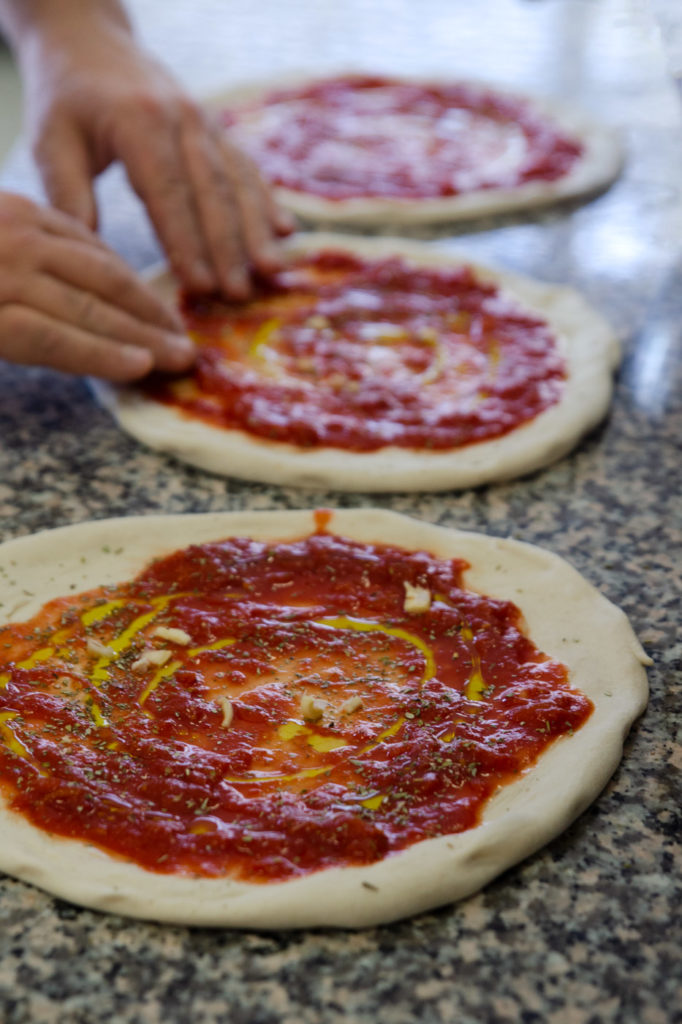
Maestro pizzaiuolo Peter Surace, who instructed me on how to shape the dough during my lesson at the AVPN cooking school, appended this information with a touch of humility: “We try to make the pizza round, but it is never perfect. We are not Giotto.”
Indeed, neither of us can claim to be one of Italy’s most celebrated Renaissance artists, however, pizza-makers have recently progressed toward the prestige of painters within the vast artistic canon of the Bel Paese. On December 6, 2017, the Art of the Neapolitan Pizzaiuolo was inscribed on the UNESCO Representative List of the Intangible Cultural Heritage of Humanity. I spoke with Pier Luigi Petrillo, Professor of Comparative Cultural Law at the University of Rome Unitelma Sapienza and member of the international group of experts that work with the United Nations to evaluate candidates for the list, who explained its function as a means of creating “intercultural dialogue” and encouraging the conservation of the unique knowledge, traditions and skills of local communities that have cultural value for the global community as a whole.
The procedure for inscription to the list is challenging, but not exclusive. Petrillo explained it as a “bottom-up process” beginning with a nomination from a local community, which undergoes evaluation by a team of specialists who may accept or reject it before a final decision is made by the Intergovernmental Committee for the Safeguarding of Intangible Cultural Heritage. The process of nomination for the Art of the Neapolitan Pizzaiuolo began in 2009 with a request made by an assembly of Neapolitan pizzaiuoli that moved forward with the support of the community of Naples at large, followed by various Italian organizations and eventually an online petition that received almost three million signatures by people from around the world. In 2016, the Italian national authorities decided to officially present the Art of the Pizzaiuolo as a candidate to UNESCO and it was inscribed one year later to the List of Intangible Cultural Heritage.
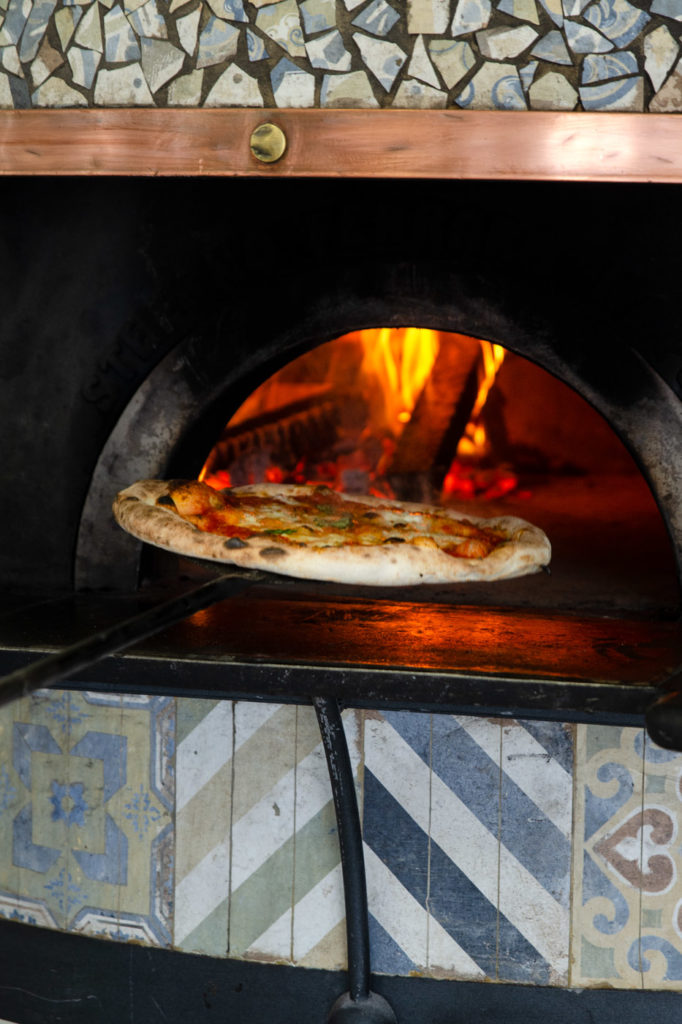
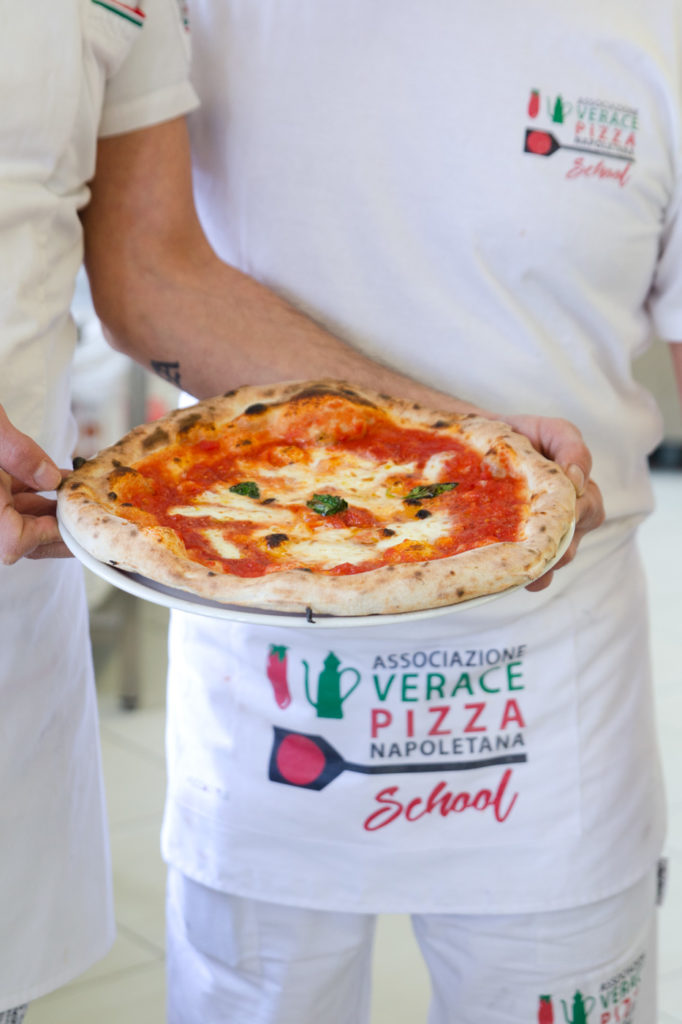


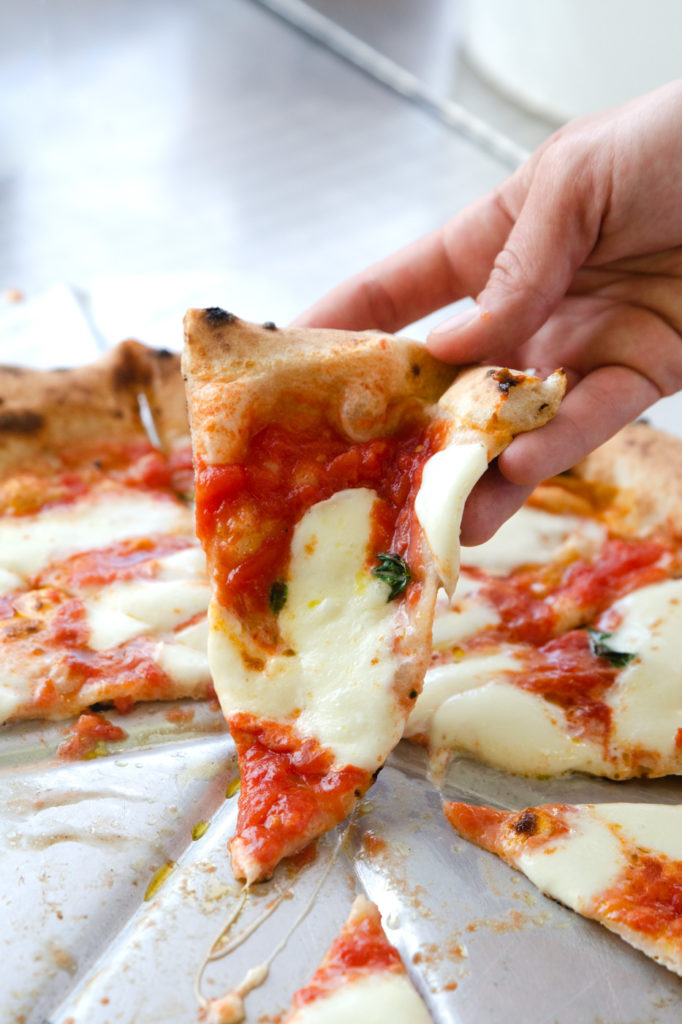

The Art of the Pizzaiuolo goes far beyond the physical act of making a pizza. In Petrillo’s words, it is both a “social ritual” shared between the pizza-maker and their guests, and “an emotional part of the identity of Neapolitan people.”
This sentiment was echoed in a conversation I had later on during my time in Naples with Gino Sorbillo (arguably the city’s most prominent pizzaiuolo) who told me: “La pizza napoletana è uno stato d’animo.” “Uno stato d’animo,” generally speaking, would be translated to mean “a state of mind,” but the word “animo” can also mean “attitude,” “spirit,” or even “soul.” In this way, Sorbillo’s statement could be interpreted to mean pizza is both a way of life for Neapolitans and the soul of the city of Naples.
When asked about the significance of UNESCO recognition for the Art of the Pizzaiuolo, Pace, Petrillo and Sorbillo all expressed a feeling of joy that corresponded not only to a public acknowledgment of the talent of the pizzaiuoli, but even more so to a newfound sense of dignity associated with their work, which has been and continues to be an essential element of Neapolitan culture.
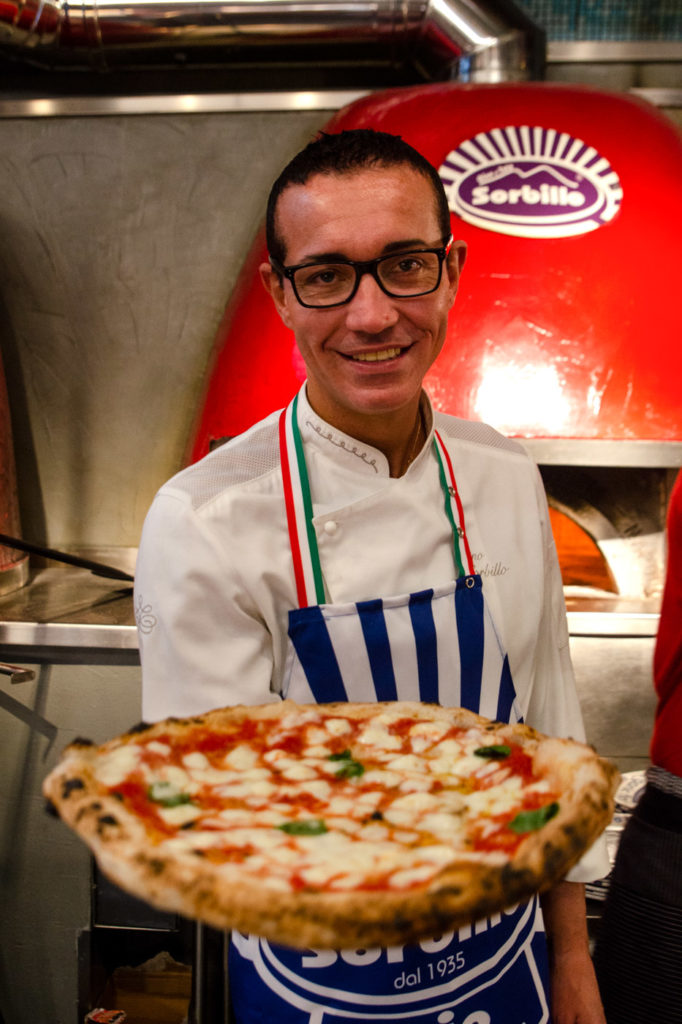

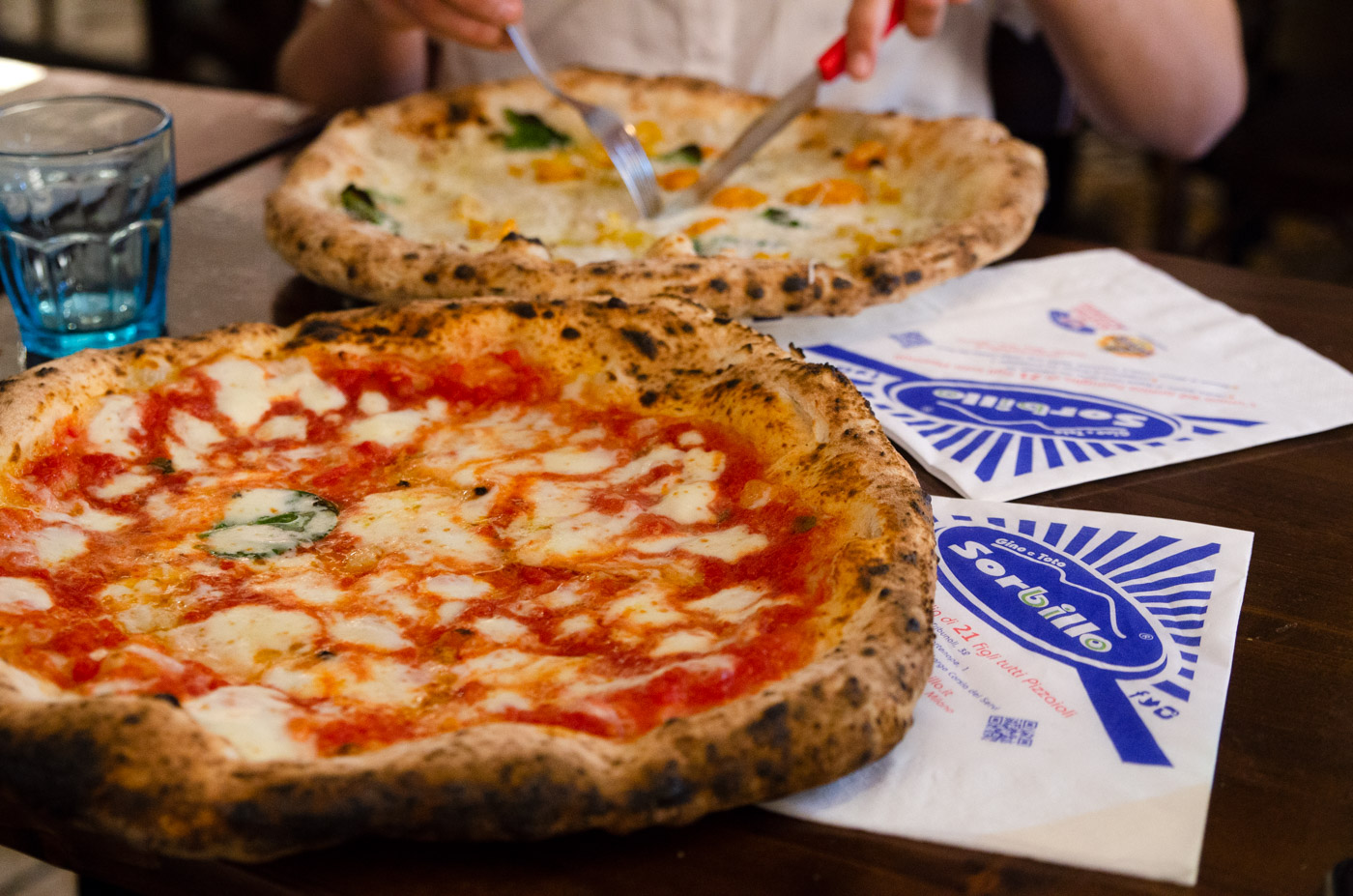
Naples, as Sorbillo described it to me, is a “very difficult” place, plagued by prejudices based on the previously powerful presence of the mafia. He claims his pizzeria represents “the rebirth of Naples” and demonstrates his desire to stay there despite the obstacles he has had to overcome in doing so. It is through pizza-making that he hopes to change the historic city center for the better and revitalize the local economy. His self-assigned and self-described “mission” has achieved considerable success, which I can attest to having seen the crowds of pizza pilgrims waiting outside each of the Sorbillo family’s pizzerias.
In Naples there is a saying, “Andiamo a farci una pizza”—let’s go make us a pizza—which is commonly used as a means of saying, “let’s go out for dinner.” This simple phrase implies both the pervasiveness of pizza within daily Neapolitan life, as well as the participatory nature of pizza-making in Naples. The many rules and recognitions associated with pizza napoletana capture this spirit, aiming to uphold Neapolitan historical and cultural traditions not by defining limitations, but rather by demonstrating that it is not necessary to be a citizen of or visitor in Naples to appreciate the art of the Neapolitan pizzaiuolo.





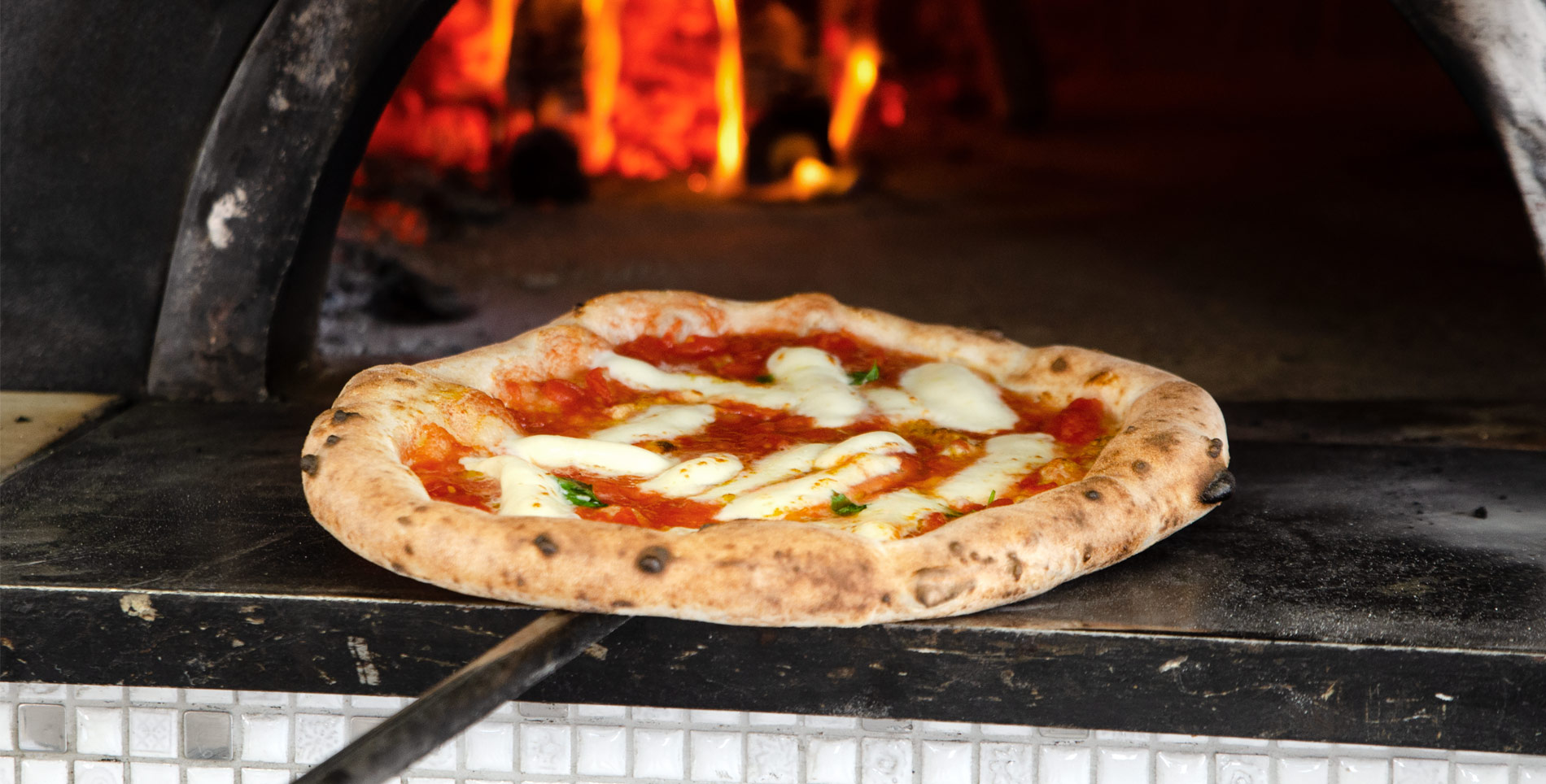

Our comments section is for members only.
Join today to gain exclusive access.